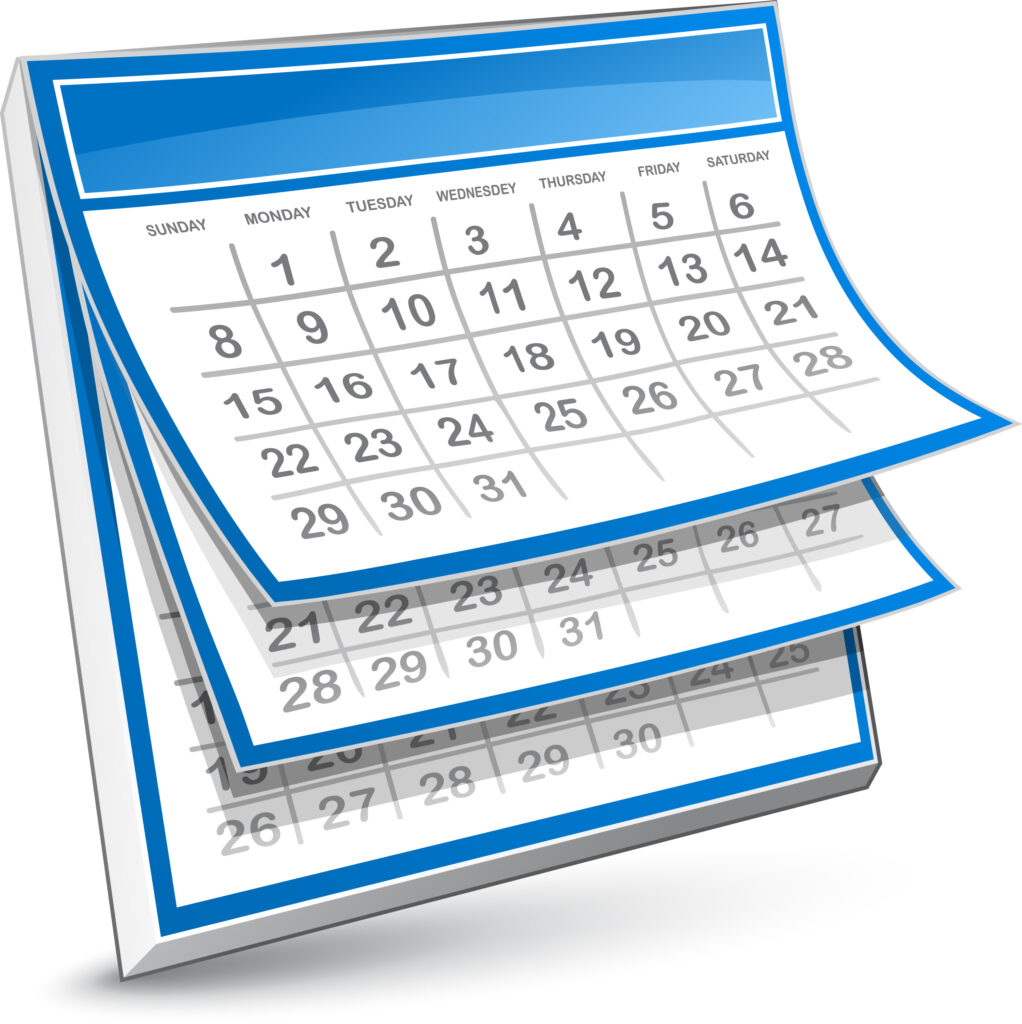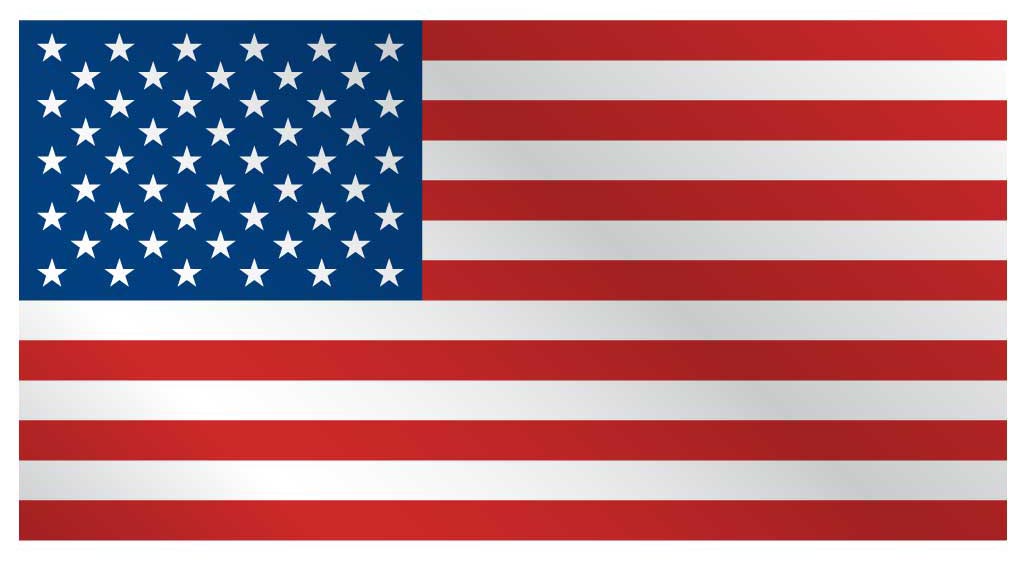One of the many unique characteristics of our nation, the United States of America, is its penchant for commemorating significant events in its history by designating special days to fly the American flag. Did you know we now have 32 national patriotic commemorative days? Some of them are holidays; all are special fly-the-flag days.

A Brief History of the Evolution of the American Flag
The need for a national flag became apparent as America entered the Revolutionary War against England. Several flags were devised and flown by different colonies. These included the Continental Colors (also known as the Grand Union Flag), the Moultrie flag (which included the word Liberty), and the Gadsden flag (which carried the words Don’t Tread on Me).
There have been 27 versions of the American flag since 1777.
In 1818 the U.S. Congress began the policy of adding another star each time a new state was added to the Union. The current flag with 50 stars has remained the same since Alaska entered the Union in 1959 and Hawaii entered in 1960. Congress established June 14 as a national Flag Day in 1949.
What the Flag’s Colors Represent
The flag of the United States of America is a symbol of freedom and liberty.
The flag’s 13 red and white alternating stripes represent the thirteen original colonies. The white stars on the blue field represent the fifty states.

The three colors on the flag represent significant virtues:
- The red represents bravery and valor.
- The white represents purity and integrity.
- The blue represents justice, vigilance, and perseverance.
Days in 2023 to Fly the American Flag
Some holidays are on a fixed calendar date, meaning they don’t change—no matter what day the week they fall on. For example, Christmas always is on December 25th. Other national holidays adjust to the day of the week, Thanksgiving is celebrated on the fourth Thursday of November.

National Patriotic Commemorative Days
- Martin Luther King Jr. Day – Jan. 6
- Inauguration Day – Jan. 20
- Lincoln’s Birthday – Feb. 12 [fixed]
- Presidents’ Day – Feb. 20
- Washington’s Birthday – Feb. 20
- National Vietnam War Veterans’ Day -March 29 [Fixed]
- Gold Star Spouses’ Day – April 5 [Fixed]
- National Former Prisoner of War Recognition Day – April 9 [Fixed]
- Armed Forces Day – May 20
- Memorial Day – May 29 **
- Remember D-day – June 6 [Fixed]
- Army Birthday – June 14 [Fixed]
- Flag Day – June 14 [Fixed]
- Juneteenth – June 19
- Independence Day – July 4 [Fixed]
- National Korean War Veterans Armistice Day – July 27 [Fixed]
- Coast Guard Day – Aug. 4 [Fixed]
- Labor Day – Sept. 4
- Patriot Day – Sept. 11 [Fixed] *
- National POW/MIA Recognition Day – Sept. 15
- Constitution Day and Citizenship Day – Sept. 17 [Fixed]
- Air Force Birthday – Sept. 18 [Fixed]
- Gold Star Mother’s & Family’s Day – Sept. 24
- Columbus Day – Oct. 19
- National Indigenous Peoples Day – Oct. 9
- Navy Birthday – Oct. 13 [Fixed]
- Election Day – Nov. 7
- Marine Corps Birthday – Nov. 10 [Fixed]
- Veterans Day – Nov. 11 [Fixed]
- Pearl Harbor Remembrance Day – Dec. 7 [Fixed] *
- Space Force Birthday – Dec. 20 [Fixed]
- Your State’s Birthday – [Date of admission]
Other Holidays
- New Year’s Day – Jan. 1 [Fixed]
- St. Patrick’s Day – March 17 [Fixed]
- Easter Sunday – April 9
- Earth Day – April 22 [Fixed]
- International Firefighters Day – May 4 [Fixed]
- National Fallen Fighters Memorial Service Day – May 7 *
- Mothers’ Day May 14
- Peace Officers’ Memorial Day – May 15 *
- Fathers’ Day – June 18
- Thanksgiving Day – Nov. 23
- Christmas Day – Dec. 25 [Fixed]
* = half staff
** = half staff until noon
Rules for Displaying the Flag
In 1942 the U.S. Congress established a code mandating how the American flag should be handled and displayed. The following is a summary of that code (with later additions).

Hanging the Flag
- Display the flag on buildings or flagstaffs from sunrise to sunset.
- The flag shouldn’t be displayed at night unless it is properly lighted.
- The flag should not be subject to weather damage, so it should not be displayed during rain, snow, and windstorms unless it is an all-weather flag.
- Place the union (blue section) at the peak of the staff when the flag is displayed from a bracket attached to the side of a building,
- When displayed against a wall or window, the union (blue section) should be in the top left corner.
- When flying two flags on the same staff, the American flag should always be on top.
- In times of mourning the flag should hang at half-mast.
- The flag should never be displayed with the blue union down except as a signal of distress in situations of extreme danger.

Handling the Flag
- The flag should be raised and lowered by hand and never raised furled.
- The flag should be hoisted briskly and lowered ceremoniously.
- The flag should never be allowed to touch the ground or floor, nor to brush against any other surface, including the roof of a house, a car, or any merchandise. (This rule protects the flag from becoming sullied or dirtied.)
- The flag should never be festooned, drawn back nor up, in folds, but always allowed to fall free.
Carrying the Flag
- When carried in a procession with other flags the U.S. flag should be either on the marching right (the flag’s right) of other flags, or to the front and center of the flag line.
- When displayed on a float in a parade the flag should hang free, not be pinned up.
- The flag should never be carried flat or horizontally, but always aloft and free.
Displayed with Flags of Other Nations

- When two or more flags of different nations are displayed, they should always be flown on separate staffs at the same height.
- The flags should be around the same size and should never be displayed in a way that favors one over the other. (This attention to the flags’ relative positions symbolizes peace between nations.)
Other Flag Rules
The flag should never have any additional designs, letters, or insignia added to it.
The flag should never be used as wearing apparel, bedding, or drapery. (However, it is acceptable to wear clothes showing the American flag.)
Don’t place anything over the flag, including letters, insignia, or other designs.
Disposing of a Worn or Discolored American Flag
When a flag is no longer in a condition to be displayed, it should be destroyed in a dignified way, preferably by burning.
Ordering a flag that has flown from the United States Capitol
To order an American Flag that has flown over the U.S. capitol, contact a Senator’s office.
The Pledge of Allegiance to the Flag

The flag of the United States of America is a symbol of liberty and freedom to which Americans pledge their allegiance. Standing at attention, facing the flag, they should place their right hand over their heart, (or if they are in uniform, they should salute). They then recite:
“I pledge allegiance to the flag of the United States of America,
and to the republic for which it stands,
one nation under God, indivisible,
with liberty and justice for all.”
The National Anthem: The Star-Spangled Banner
The national anthem is a tribute to the flag of the United States of America. If it is being played or sung at a gathering, meeting, or sporting event, audiences should stand at attention and place their right hand over their heart, or salute if they are in uniform.
- They should take off their hats to show respect for the flag.
- If appropriate, they should sing it along with the band or soloist who is performing it, and do so with fervor.
- They should pay full attention and not speak to others in person or on their cell phones during the playing of the National Anthem. Also, it is improper to eat or drink during the Anthem.

A Parting Suggestion
Take a few minutes to select the fly-the-flag days and choose those for which you want to be sure to display your flag. Then, on your calendar, write the word “Flag” on all the days you’ve chosen so you won’t forget to display it.
Let your flag diligence be a good sign of your personal patriotism!

